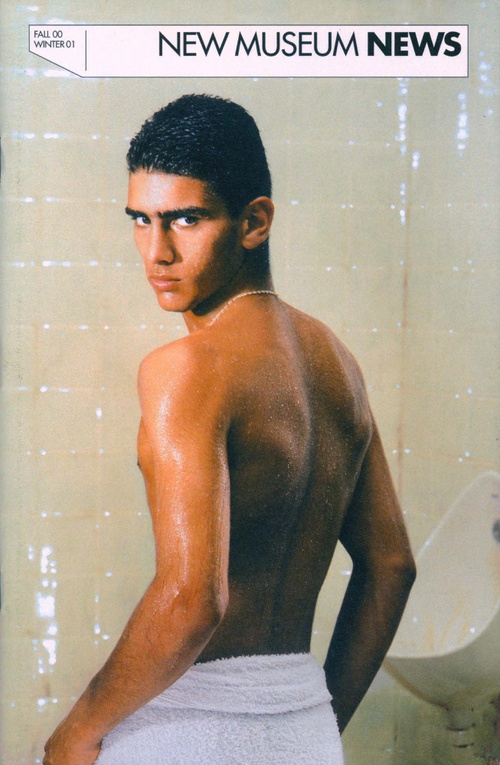Pierre et Gilles
Pierre et Gilles
This is the first exhibition in the United States devoted to the luminous and exuberant photographic images made by the French artists Pierre et Gilles. From the beginning of their collaboration in 1976, the partners have been engaged in a single-minded pursuit of beauty while depicting the enchantments of gay existence. This exhibition is meant to bridge a number of gaps. Even though innumerable viewers worldwide are familiar with their work in reproduction, on album covers, in magazines and postcards, and in music videos, there have been few opportunities in this country to experience the images directly as works of art. Similarly, Pierre et Gilles’s close connections to pop culture have tended to exclude them from serious considerations of contemporary art. Finally, their explicit attitude regarding the importance of beauty in the experience of art has made it difficult for critics to contextualize their work in terms of the dominant trends in artistic production of the past ten years.
The ubiquity of Pierre et Gilles’s images in reproduction belies the complexity of the how they are created. Beginning with sketches, they engage in a great deal of editing and elaboration before arriving at the desired scenography. From these drawings, work proceeds to the selection of models, construction of sets and props, and the development of lighting, costume, and makeup. Once the scene has been photographed, a single print is selected from the many exposures made during the shoot; it is carefully painted and glazed, both to enhance the luminosity of the image and to transform the photo-mechanical product into a unique object.
The earliest works on view are a series of largely unembellished portraits of friends and celebrities from the late 1970s and early 1980s. Subjects range from such superstars as Iggy Pop and Yves Saint-Laurent to lesser-known figures like Arja and Krootchey. This early work is distinguished by Pierre et Gilles’ editing out of all unessential pictorial detail in order to focus on the characteristic personas of their subjects. An exception is the more elaborate 1978 work Le Cow-boy — Victor, which features a spiral, red-white-and-blue pattern of stars and curving stripes behind the title character, whose gun-slinging pose is offset by the presence of pink gloves, a yellow neckerchief, and very little else. A well-known 1981 work, Adam et Eve — Eva Ionesco & Kevin Luzac, is embellished by a background of flowers and trees meant to suggest the Garden of Eden.
By 1983, Pierre et Gilles were using more elaborate settings for their subjects to achieve often comic results. To this end, a work like La Panne — Patrick Sarfati & Ruth Gallardo, which defines a postcoital moment, relies not only on the bedroom décor, but also on the stylized hair and body makeup of the two models. In 1985 Pierre et Gilles embarked on the first of several pictorial series, Les Pleureuses, which focuses on the faces and torsos of a number of archetypal subjects (the sailor, the pharaoh) in the act of crying. While underscoring the artists’ interest in the cultural dimensions of their subjects, Les Pleureuses epitomize their commitment to an unmistakably gay sensibility. This comes through clearly in the succeeding series, Saints et Martyrs, which presents models with pinup faces and physiques as male Catholic saints.
By the end of the 1980s, Pierre et Gilles were depicting non-Christian mythological figures such as Neptune, Sarasvati, and Médusa. This interest in religious subjects was coupled with a growing fascination with secular ideologies. Le Petit Communiste — Christophe (1990), for example, which shows a uniformed Soviet soldier with the familiar tear trickling down his face, was created the year after the Berlin Wall fell. Le Petit Chinois — Tomah (1991), in which a white-shirted Asian man confronts the viewer with a bloodied knife in hand, can be read as the image of a defiant China. From a slightly different perspective, Le Petit Mendiant — Tomah (1992), centers on the grinning countenance of an anonymous beggar, whose outstretched hand contrasts with a profusion of glittering stardust filling the air around him. The viewer cannot decide whether the beggar’s acceptance of his fate transcends his mortal needs or if the West’s tendency to romanticize all aspects of the East, even its underside, is being spoofed.
In their work of the last ten years, the range of subject matter and moods has further matured. Though Pierre et Gilles continue to depict celebrities, as represented in frequently startling portraits of Catherine Deneuve (1991), Nina Hagen (1993), Sylvie Vartan (1994), and Juliette Greco (1999), they are just as likely to produce more humorous images, such as the campy I Love You - Dominique Blanc (1992) and the melodramatic Le Papillon Noir — Polly (1995). Some of the most recent images have introduced a melancholic tone that is new for their work, as evinced by the faraway look in one of their favorite model’s eyes in Tentation — Jiro Sakamoto (1999) or in the seemingly empty helmets in Autoportraits sans Visage (1999). But their most elaborate series of the 1990s, Les Plaisirs de la Forêt, comprising erotic scenes in a nocturnal forest, highlights the combination of erotic tension, elaborately executed settings, and attention to minute detail that characterizes Pierre et Gilles’s surprisingly diverse oeuvre.






















